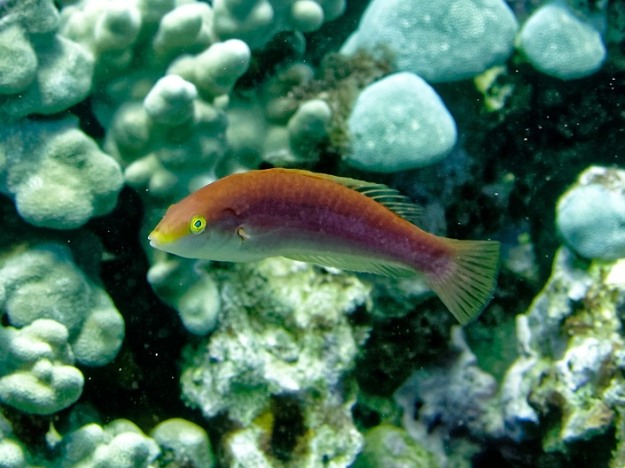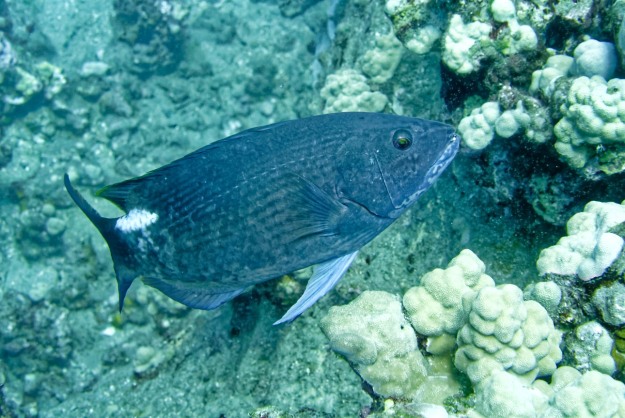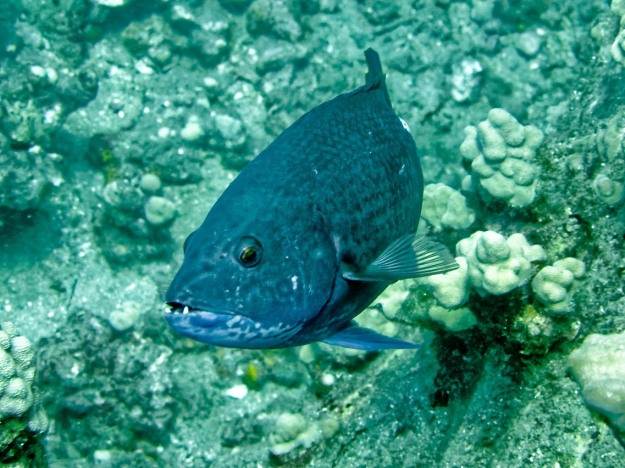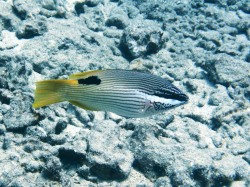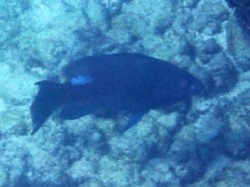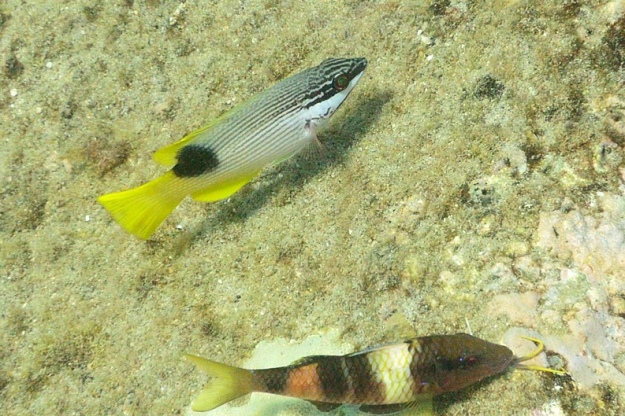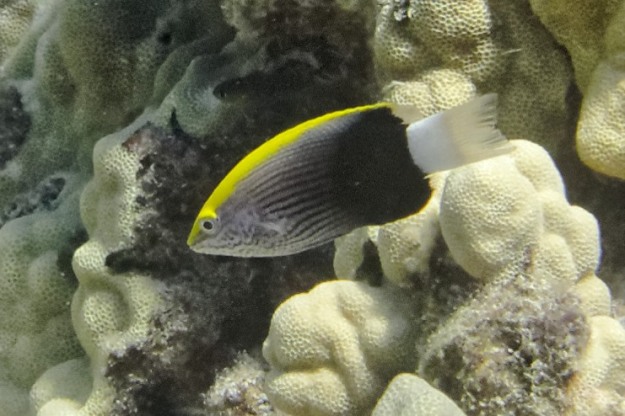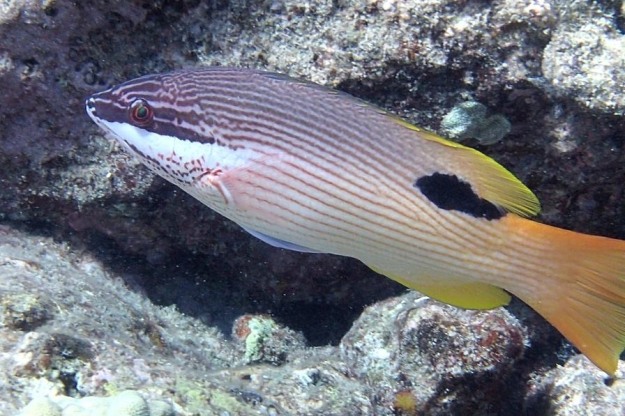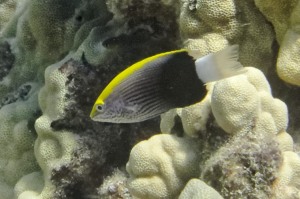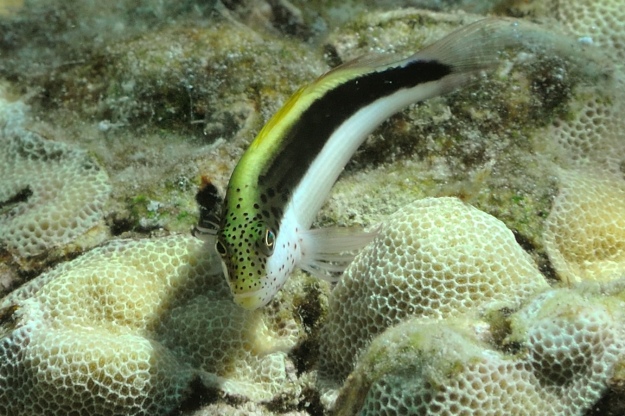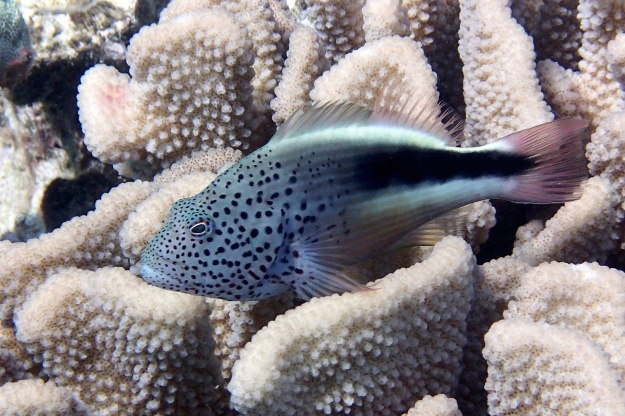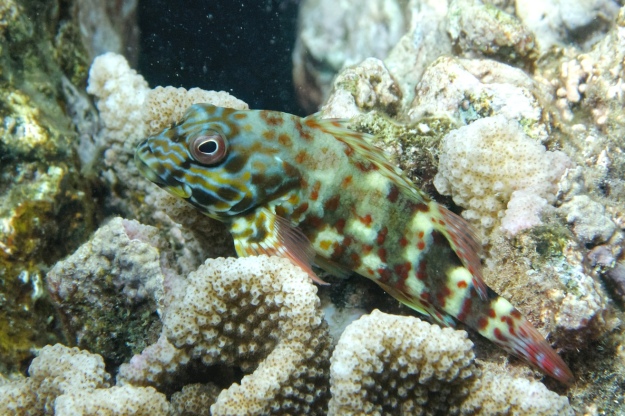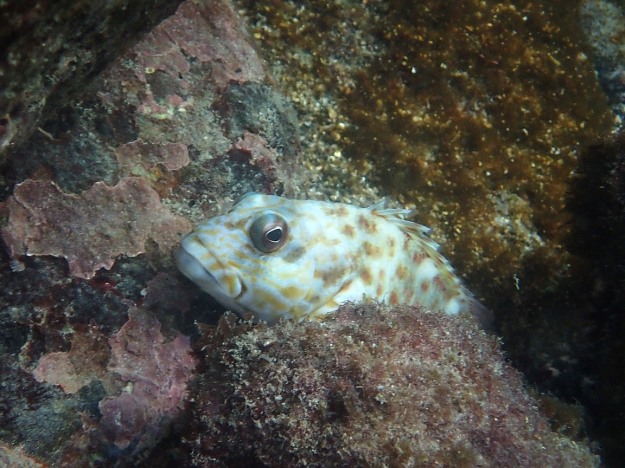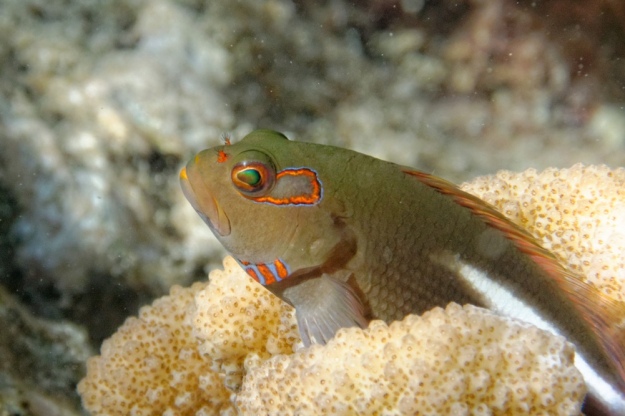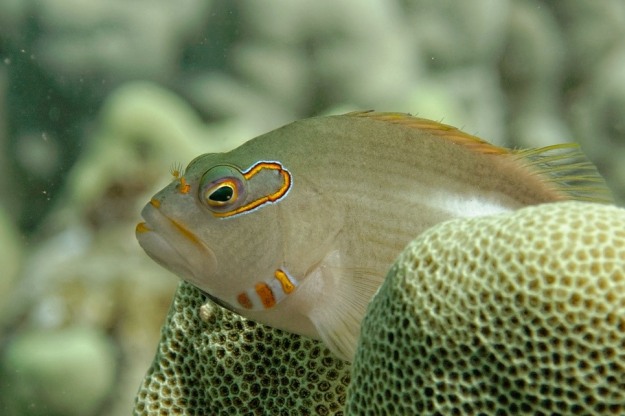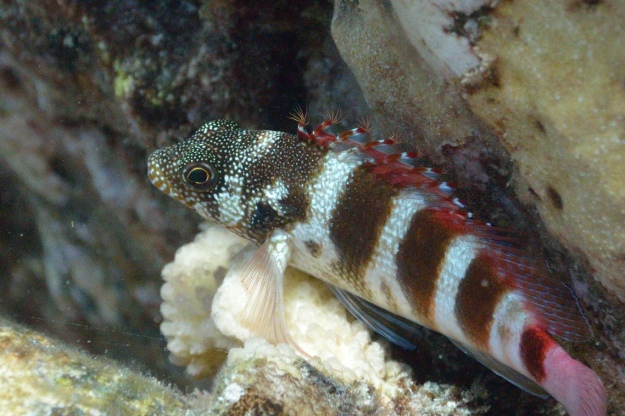On Saturday Marla and I took a two-tank boat dive with Blue Wilderness, a good outfit based at the Waikoloa resorts. Their rigid inflatable boat leaves from the Puako boat ramp, right in the heart of the numerous fine South Kohala dive sites. The first site we dove was near the southern end of the Mauna Lani resort. I believe the site is colloquially known as “Skate Park.” Interesting topography, but not too fishy on the morning we dove. The second site, known as “Puako House 20” was more fun, but we saw some good stuff at both sites.

Early on the first dive I spotted this tiny juvenile psychedelic wrasse, less than in inch long, hunkering in a dark recess at about forty feet. It swam with a halting, waving motion, making it look a bit like a fragment of floating detritus. Juvenile rockmover wrasses employ a similar strategy to avoid predation. The psychedelic wrasse is a fairly uncommon endemic.

A photogenic Ewa fang blenny, larger and more colorful than many. I always enjoy the pseudo-smile on these bold little endemics.
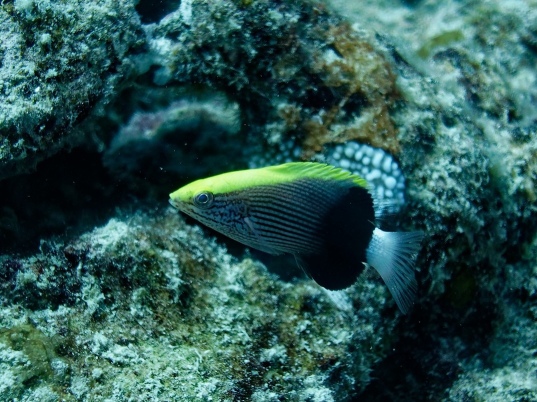
This juvenile Hawaiian hogfish appeared to have a bite taken out of its caudal (tail) fin. Another endemic fish.
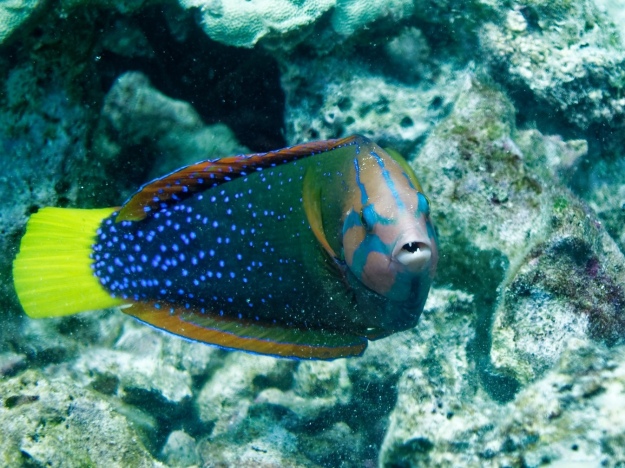
A terminal male yellowtail coris asserting. It had been rooting around in the sand—some of which you can see in the photo—for invertebrate prey when I disturbed it. You see a lot of reef fish with broken teeth—the result of their tough diets of hard-shelled invertebrates or, in the case of some species, coral. I presume the teeth grow back.
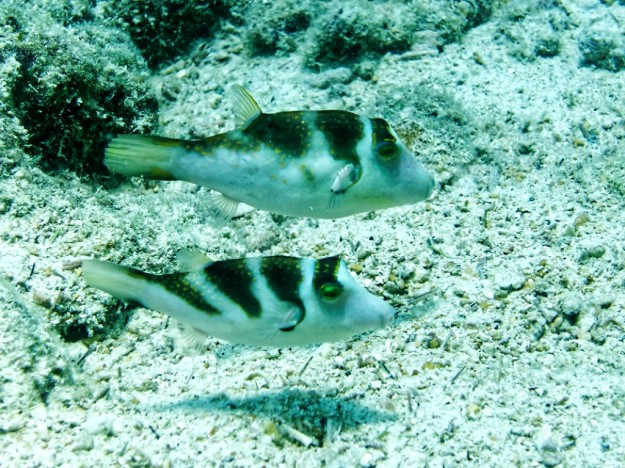
A serene pair of crowned tobies. Hoover says that these endemic puffers are fairly common at scuba depths, but I don’t see them much. (I try to get the color balance in many of my photos to reflect the way things actually look at these depths—about forty feet in this case. I find the flat, blue-ish underwater lighting quite pleasing.)


